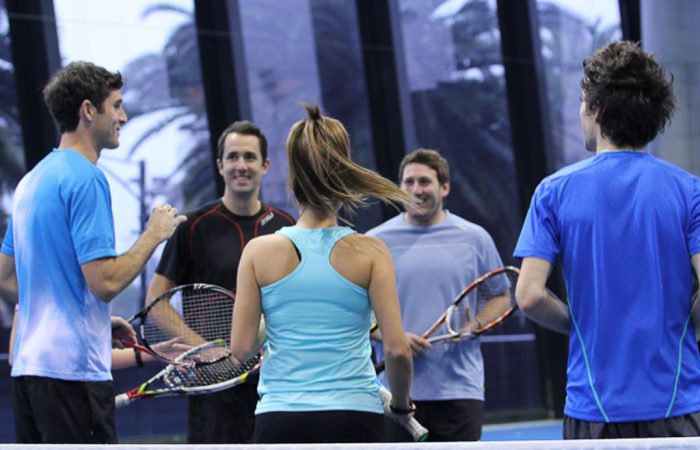24 August 2016 | Tennis Victoria

Tennis Australia High performance coach Emily Rea, is the Player Development Coordinator at Tennis Victoria and National Academy Development Coach. This month she shares her tips on the importance of cooling down after a match.
It’s common knowledge that warming up and starting a match as best as possible is necessary in any competitive sport and tennis is no exception. Ensuring matches are won as efficiently as possible is important, particularly when playing tournaments that require back-to-back performances over consecutive days. Winning a tennis match requires the player to complete the final point and win, rather than being able to run the clock down and hold on to a lead, and this can be difficult once fatigue and pressure come into play.
Warming up before a match is important to help you get off to the best start possible, but cooling down after a match is vital to maximise recovery and allow you to back up your performance, whether that be between singles and doubles matches in weekly competition, or playing consecutive matches in a tournament.
Cooling down the body should start with an easy jog for approximately 5 minutes, or until the heart rate has slowed and the body feels loose. Active recovery such as easy jogging keeps blood pumping around the body and circulating back to the heart which is important to reduce blood pooling in the legs and impacts of exercise on blood pressure.
Active recovery assists the body in removing lactic acid that accumulates in working muscles throughout exercise. Maintaining blood flow through low intensity movement like jogging flushes the lactic acid out of the muscles and also improves the rate that the body can break down lactic acid in the blood stream. This may reduce the levels of muscle stiffness and soreness following intense exercise, thus allowing the body to perform closer to optimal levels sooner.
Elevated hormone levels in the blood stream through exercise are also returned to normal levels more rapidly through active recovery routines thus promoting increased recovery.
A passive stretching routine should follow active recovery to reduce muscle soreness by lengthening the muscle fibres, whilst also promoting range of motion at the joints and maintaining flexibility.
It is important to stretch the major muscle groups such as gluteals, quadriceps, hamstrings, calves, and muscles across the chest and upper back, including triceps, deltoids and pectorals are very important.
Joints such as ankles and wrists should also be mobilised.
The rotator cuff, hip flexor and muscles through the trunk such as abdominals should also be stretched as these can be prone to injury and excessive tightness through tennis.
For a cool down to be most effective, it is important that the routine is commenced as quickly as possible upon the completion of play. Foods that are high in protein should also be ingested within 30 minutes of the completion of play to maximise recovery.
Make sure you incorporate an effective cool down into your match play routine to maximise your enjoyment of and recovery from match play.




